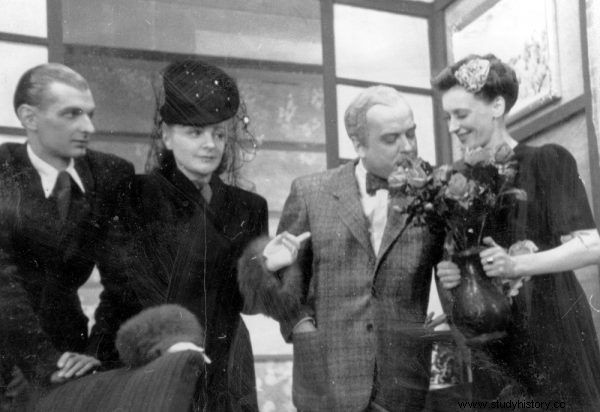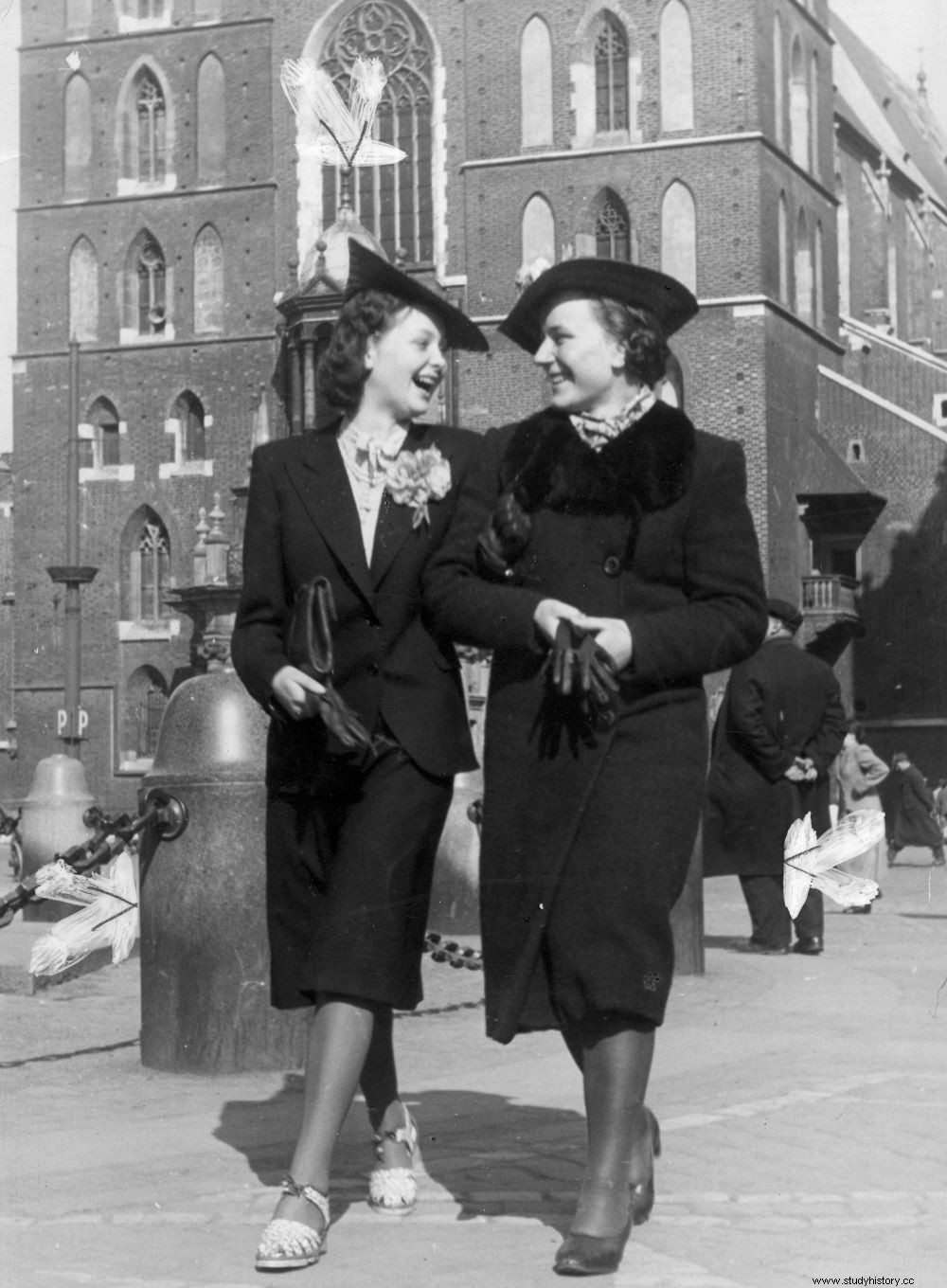Little details could say it all. Which woman slept with a German, did business with the occupation authorities, or did illegal business? It was enough to look at ...
After the outbreak of World War II and the German occupation of the country, Poles began to get impoverished very quickly. It was reflected in all areas of life, including the external appearance of people. Few people could afford to buy new clothes, and the old ones were more and more worn and ... looser (due to food shortages).
With time, it was becoming easier and easier to recognize the beneficiaries of the new realities on the street, including black market tycoons, Volksdeuts and collaborators. While the former were not scorned and not particularly feared, the rest had to be carefully considered. Fortunately, in the vast majority of cases, they could be spotted from a distance.
Discovering German roots
There was a time when it seemed all was lost. Poland was wiped off the map and Hitler was winning on all fronts. Then the traitors wore their heads held high. They spoke of their countrymen with contempt, suddenly remembered their (alleged) German roots and willingly signed volkslists. Many virgins also decided to start an affair with a German.
Usually there was no great love in it, but pragmatism in its purest form. Thanks to such a "guardian", the woman did not have to fear any unpleasantness on the part of the occupant, and in return for the company and her charms offered to him, she could count on gifts, money or a flat.

Scene from the comedy "That's how you get women", staged in open theater (photo:public domain)
All Polish women who allowed themselves closer contacts with Germans, for example were seen in public with them, immediately received the label of collaborators. The text of one of the war "forbidden songs" - "Red Apple" - reads:
Miss is coming
With a suture on her arm,
Very proud of it,
She has a dress from the ghetto.
For such a daughter
How are you not ashamed, father?
Not ashamed, because like a daughter
He became a volksdojczem
The most fashionable dresses
While successive magazines advised how to make one relatively serviceable out of two falling apart dresses, elegant women in perfect-looking dresses strolled the streets of Polish cities. At first glance, you could see that their clothes are in excellent condition and it is simply impossible for them to represent their pre-war wardrobe.
These women could afford the services of seamstresses or occupying fashion houses. It is worth emphasizing that after the outbreak of the war, this type of place not only did not disappear from the map, but it was even a time of prosperity for them!

The capital's "Frill" organized fashion shows and invited influential clients to special private presentations of new models. The occupation forced only the entrepreneurs to change… clientele profile. In the new reality, fashion houses dressed the wives and lovers of Germans, Volksdeuts, Germans and wartime upstarts, the rest came to the studio mainly to make further alterations in old worn rags.
If one of the ladies, for example, purchased an elegant evening gown and officially appeared in it, it was immediately known who she was. A Polish woman for putting on such outfits, let alone going to balls in them, would be socially ostracized. It was believed that at a time when the Germans shot thousands of innocent people and developed the extermination industry, such an attitude was simply immoral.
The luxurious wardrobe was also chosen by actresses of open theaters or cabarets, which broke away from the general boycott of institutions controlled by the occupant.

Two sailors of a German submarine in the company of young women in Zakopane (photo:public domain)
As Karolina Żebrowska emphasizes in her book “Polish Beauty. A hundred years of fashion and style ” Over-tuning itself immediately aroused suspicion. Even if elegant clothes sometimes made it easier to escape from a round-up, or to confuse a suspicious Gestapo man who was passed on the street. However, it is worth remembering that:
German women and collaborators were often recognized by their expensive French or English fabrics and their flaunting products that were normally confiscated. "Pola is always smart and dressed in the most expensive French silks, received as a gift from her lover", describes [author of the diary from the Warsaw ghetto] Mary Berg.
Stockings without complexion
Stockings were another item of clothing that immediately showed him a deal with the enemy. Today they do not seem to be something special, let alone luxurious. You can buy different variants of them even in a larger supermarket. However, during the occupation it was completely different.
First of all, unless you were a flapper, it was not appropriate to walk down the street with your bare feet. It seemed downright indecent. Thin, elegant stockings with a characteristic seam at the back were a perfect complement to the outfit. The demand was huge and with the outbreak of the war, the price of stockings skyrocketed. It was a scarce commodity and it was wearing out very quickly.

Folksdojczka from Kępa Skórecka (photo:public domain)
As emphasized by the reconstructor Joanna Mruk, during the occupation all types of stockings became very difficult to find. Of course, like everything else, you could buy them on the black market (for example, German soldiers brought them from France), but the prices were dizzying. Mruk quotes the writer Sabina Sebyłowa, who spared no bitter words:
New, beautiful, not completely torn stockings are a dream come true for belts and other German "Polish women", which should be called clearly.
Everything else saved her stockings as much as she could. It was extremely difficult because they are fragile and easy to damage. Therefore, apart from a few exceptions, the ladies either completely gave up stockings and replaced them with thick socks, or repeatedly mended the ones they had.
A woman who showed up somewhere in new, fresh stockings and elegant, unworn leather boots immediately became suspicious.
Knock… knock… knock…
It was the same with footwear as with stockings. A characteristic sound of the street in occupation was the clatter of wooden blocks on the sidewalks. The Germans rationed the skin sharply. So much so that the shoemakers had nothing to sew. The materials they managed to obtain were to be used for footwear for the occupier and his henchmen. There were leftovers for the Poles, from which various models of sandals were sewed.

Two women walking in front of St. Mary's Church in a session by a German photographer from 1940 (photo:public domain)
When winter came, identifying women who collaborated or did business with Germans became even easier. All because of what they protected themselves from the frost. When the war impoverished society, furs repaired the budget in many homes. In the twenties and thirties, elegant ladies had at least one of their art in the wardrobe, which at the beginning of the war they had a heavy heart on consignment. If the choice was between fur and feeding the family, there could only be one decision.
When in 1941 Germany attacked the USSR, it turned out that the "general frost" was taking its toll on them like Napoleon. The command decided to provide the Wehrmacht with warm clothing, which was to come not from factories, but from robbery in the occupied countries. A fur collection was organized on a large scale, which inevitably covered mainly women's garments. It was carried out in ghettos under the threat of death. The ladies who, despite the order, were still wearing fur coats, immediately revealed their relations with the Germans. Krzysztof Trojanowski in his publication on the French occupation fashion and its influence on Polish fashion states:
The few Jewish women who, despite the ordinance and the threat of the death penalty, wore fur coats were commonly perceived as collaborators and informers of the Gestapo. "They had [because] the same external privileges, which was proof of the favors of our executioners" - recalled the famous singer Wiera Gran, whose noble furs were stolen from the apartment occupied by the Germans, so she only gave a rabbit fur lining as part of the mandatory collection.
Unfortunately, even the most careful observation and catching suspicious details could not be 100% safe against a mishap. Poles at every step had to be careful not to say too much and not betray themselves with illegal business or work in the underground.
